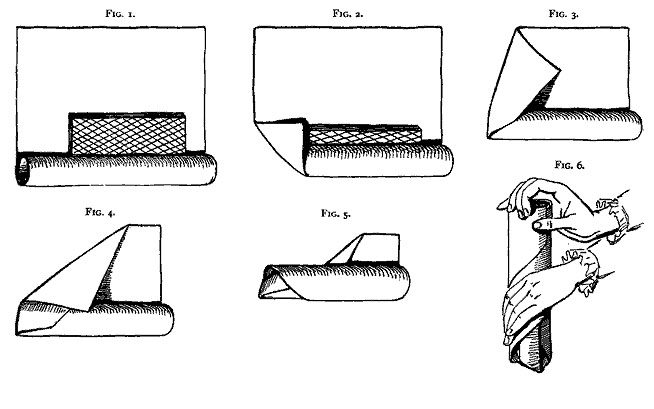IT will surprise the reader to learn that tying up parcels is so expensive that the busiest storekeepers are endeavoring to do without it as far as possible. Have you noticed how of late years, in the great shopping stores in New York, parcels are no longer fastened with string, unless they happen to be very large or unhandy? Whatever you purchase now is handed to you securely wrapped up, yet without cord, pins, elastic bands, or apparently anything but paper to hold it. There is a knack about this work of the clerks, which it would profit every young or old person to learn.
One of the members of a firm owning a very large store said, when he was asked about it, that the discovery of this new method of wrapping parcels brought about a saving of hundreds of dollars a year in their store alone. It was not the twine that cost so much, he said, but the time consumed in adjusting it. Whenever it still has to be used, on a big or an oddly shaped bundle, it takes as long to put string around the package as it did to make up the parcel itself, so that more clerks are needed where twine is used on all parcels than where the new method is followed. This is the reason that twine has come to be regarded as costly.
These six pictures, showing a piece of calico during the process of being wrapped up in a sheet of brown paper, reveal precisely how the swift- fingered girls and boys, and men and women in the stores now dispense with string.
Imagine yourself behind the bundle, making it up. All that is necessary, you see, is to use plenty of wrapping-paper, taking care to have a sheet wide enough to leave a great deal of margin on the left- hand end of the goods you are wrapping up. Having half rolled up the goods the bundle is like Figure I. Another roll having been taken, the left-hand corner is turned over, as in Figure 2. Another roll, or “twist of the wrist,” as you so often hear people say, and then, as in Figure 3, you may fold in the entire spare left-hand end of the wrapping-paper. Immediately, without any more rolling, catch up the spare paper still farther, as in Figure 4. Then roll up the parcel as much farther than is shown in Figure 5 as will complete the rolling, stand the parcel on end, bend down toward the center and tuck in all around the loose paper at the right-hand end, and the parcel is complete and secure.

